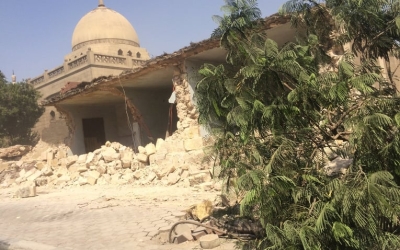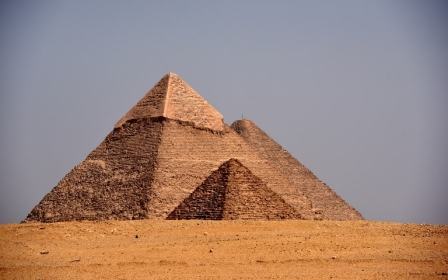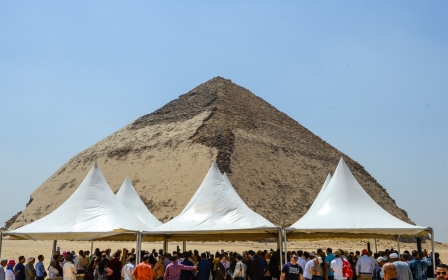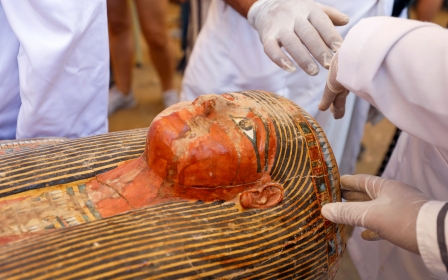Egypt discovers 14 ancient coffins at Saqqara
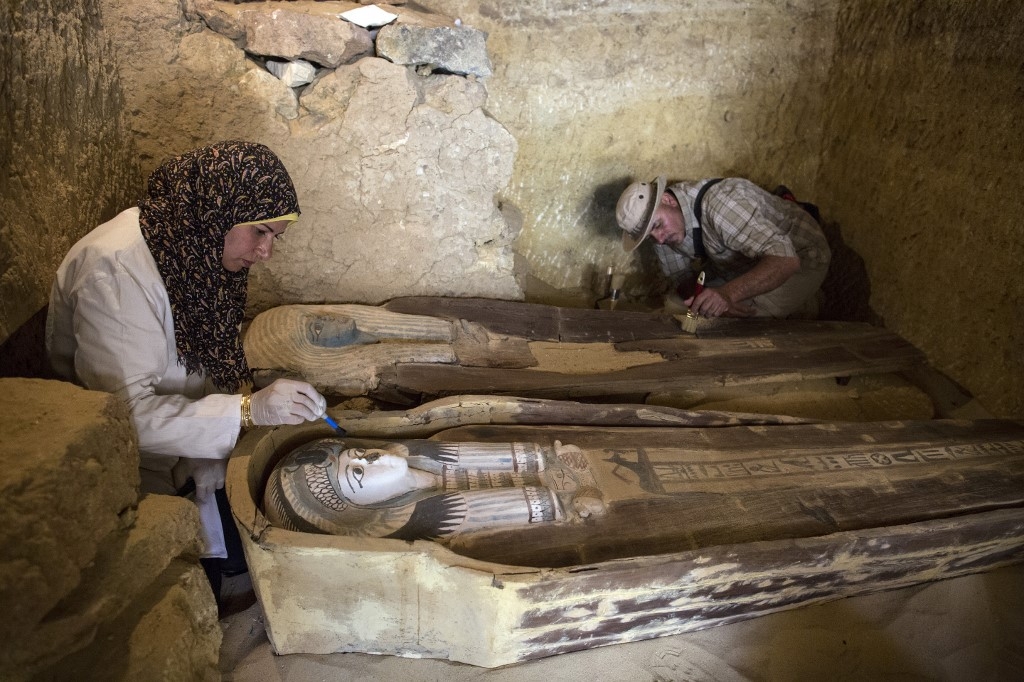
Egypt's antiquities ministry announced on Sunday the discovery of 14 coffins in the Saqqara area that had lain buried for 2,500 years.
The tombs were found two days ago during an archaeological dig and follow the discovery of 13 wooden sarcophagi in the same burial spot earlier this month, according to the ministry.
New MEE newsletter: Jerusalem Dispatch
Sign up to get the latest insights and analysis on Israel-Palestine, alongside Turkey Unpacked and other MEE newsletters
The vast Saqqara necropolis, about 30km south of Cairo, is part of the ancient capital of Memphis, a Unesco World Heritage site.
Saqqara is the site of the colossal rectangular-based Step Pyramid of Djoser.
Photographs of the well-preserved wooden coffins show ornate and intricate paintings, with maroon and blue lines, as well as hieroglyphic pictorials.
Egypt has sought to promote archaeological discoveries across the country in a bid to revive tourism, which took a hit with restrictions on travel due to the coronavirus pandemic.
New finds are a regular occurrence in Egypt, whose ancient culture dates back several millennia.
Last year, Egyptian authorities unveiled a number of coffins discovered in the Asasif Necropolis, Luxor, which includes tombs dating back to the 22nd dynasty, from the 10th century BC. The coffins contained the mummified remains of men, women and children.
Irrevocable damage
The ministry described the find as one of the "biggest and most important" discoveries in recent years, and the largest find of ancient sarcophagi since the 19th century, said Antiquities Minister Khaled el-Enany in Luxor.
However, in August, authorities caused outrage when they began demolishing tombs at the world-famous City of the Dead, a vast necropolis containing the tombs and shrines of important Islamic leaders, to make way for a new flyover.
Earlier this month, authorities also announced the building of two motorways across the pyramids plateau, reviving and expanding a project that had been suspended in the 1990s after an international outcry.
Now on the edge of a growing Cairo, the Great Pyramids, Egypt's top tourist destination, are the sole survivor of the seven wonders of the ancient world and the plateau is a Unesco World Heritage site.
The motorways are part of an infrastructure push spearheaded by President Abdel Fattah el-Sisi, who is building a new capital city to ease the population pressure on Cairo, home to 20 million people.
The northern motorway will cross the desert 2.5km south of the Great Pyramids located in Giza. The southern one will pass between the Step Pyramid of Saqqara - the oldest monument - and the Dahshur area, home to the Bent Pyramid and the Red Pyramid.
Critics say they could cause irrevocable damage to one of the world's most important heritage sites
Middle East Eye delivers independent and unrivalled coverage and analysis of the Middle East, North Africa and beyond. To learn more about republishing this content and the associated fees, please fill out this form. More about MEE can be found here.



